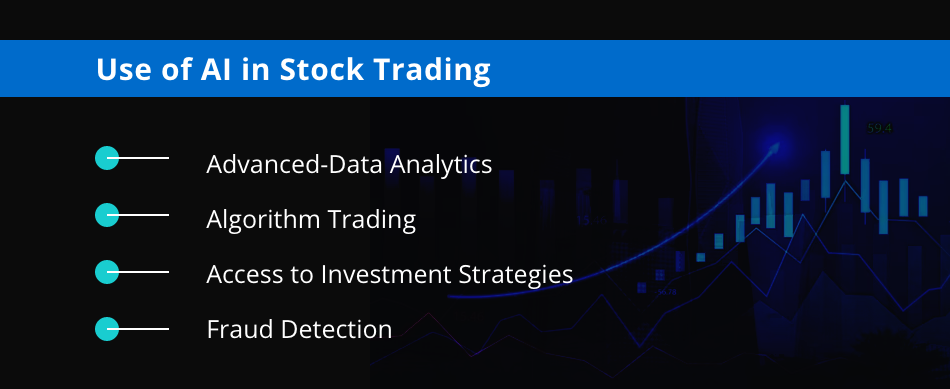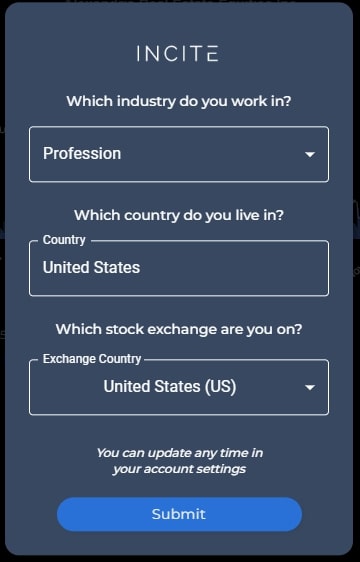AI stock predicting/analyzing platforms must be compatible and integrate seamlessly with existing tools, systems and workflows. A platform that seamlessly integrates with your existing tools and workflows can boost efficiency and increase productivity. Here are 10 strategies to help you analyze the compatibility and integration of these platforms.
1. Check Brokerage Integration
Platform integration with preferred brokers or trading accounts: Ensure that the platform works seamlessly with the broker you choose or account.
Trade execution: Determine whether the platform supports direct trade execution through the integrated broker.
Account synchronization - Check to see if the platform you are using is capable of syncing account balances, transactions, and positions in real-time.
2. Examine the availability of APIs
API access: Make sure the platform provides an API (Application Programming Interface) to allow developers to create custom tools or automate workflows.
API documentation: Verify that the API provides clear examples of usage scenarios.
Rate limits: Find out if there are reasonable rate limits for the API and if it can accommodate the anticipated volume of usage.
3. Check Third-Party Tool Integrity
Popular tools Check to see whether there are any connections between the platform and tools like Google Sheets, Excel, or trading robots.
Data import and export: Make sure the platform permits easy export and import of data into and out of other tools.
Extensions and plugins: Make sure the platform is able to support plugins or extensions. They can add additional functionality.
4. Test Compatibility with Operating Systems
Desktop compatibility is crucial. Be sure that your device works with the operating system you like (Windows MacOS Linux).
Mobile compatibility: Find out if the platform offers a mobile app for iOS as well as Android.
Web-based accessibility: To improve flexibility, verify that the interface for your platform is accessible via a web browser.
5. Evaluation of Data Integration Capabilities
Data sources: Make sure that the platform is able to integrate diverse sources of data, including market data providers RSS feeds, social media sentiment.
Real-time feeds for data: Find out if the platform permits for real-time integration of data in order to provide up-to date analysis.
Historical data import: Verify whether the platform allows import of historical data for backtesting or analysis.
6. Testing of cloud and on-premise compatibility
Cloud-based platforms: Ensure the platform is accessible from anywhere with an internet connection.
On-premises deployment: Make sure you know your platform is compatible with on-premises deployment.
Look into the hybrid model. It combines on-premise and cloud capabilities.
7. Check for Cross Platform Synchronization
Device synchronization. Check that data and settings are synchronized across all platforms (desktops tablets and mobiles).
Make sure that any changes made to one device reflect on other devices.
Offline Access: Make sure to determine if there are any limitations on the functionality of the platform or access to data while it's offline.
8. Assessment of the degree of compatibility with trading strategies
Algorithmic trading - Ensure that the platform you choose supports automated or algorithms trading strategies.
Custom indicators: Determine if the platform allows the use of customized technical indicators or scripts.
Strategy backtesting Check to see if the trading platform allows backtesting using historical data.
9. Assess Security and Compliance
Data encryption: Ensure that your system is using encryption for all your data, at all times, including when it is in rest.
Verify that the platform provides security-grade authentication options, such as two-factor authentication.
Regulatory compliance: Check if the platform is compliant with applicable laws (e.g., GDPR, FINRA, SEC).
10. Test Scalability and Performance
Scalability: Ensure that the platform can handle an ever-growing amount of data as well as users and users, so that it can grow with your business.
Performance under load - Check that the platform is able to continue responding under conditions of extreme market volatility.
Resource usage: Find out whether the system is efficient in using system resources (CPU, memory, bandwidth).
Bonus Tips
User feedback: Make use of testimonials from users to assess the capabilities of integration on platforms.
Free trial period: You can try a demo or a free trial to determine the platform's compatibility with your existing workflows and tools.
Support for customers: Ensure that the platform offers a robust customer support to integrate-related issues.
By following these tips to evaluate the integration and compatibility of AI stock predicting/analyzing trading platforms, ensuring they work seamlessly with your existing systems, and improve your trading efficiency. Check out the most popular best ai stock trading bot free info for blog tips including ai stock market, ai investing platform, best ai stock trading bot free, best ai for trading, ai trading tools, ai stock picker, ai for investment, chart ai trading assistant, ai investing app, best ai trading software and more.

Top 10 Tips For Assessing The Scalability Ai Software For Predicting And Analysing Trading Platforms
Analyzing the scalability of AI-driven stock prediction and trading platforms is essential to ensure they are able to handle growing demand for data, user demands, and market complexity. These are the top 10 ways to assess scalability:
1. Evaluate Data Handling Capacity
Tip: Make sure the platform you're looking at can handle and process large amounts of data.
Why? Scalable platforms have to handle growing data volumes without performance degradation.
2. Test Real-Time Processing Capabilities
Tips: Check how the platform processes real-time data streams, for example, live stock prices, or breaking news.
The reason: The importance of real-time analysis is in trading decisions, and delay can result in missed opportunities.
3. Examine the Cloud Infrastructure for Elasticity
TIP: Check whether the platform is cloud-based infrastructure (e.g., AWS, Google Cloud, Azure) and can scale resources dynamically.
Why? Cloud platforms allow flexibility. The system can scale up or back down according to the demand.
4. Algorithm Efficiency
Tips: Assess the computational efficiency of the AI models (e.g., deep learning and reinforcement learning) employed to predict.
The reason is that complex algorithms can be resource-intensive. Optimizing them to allow them to scale is crucial.
5. Learn more about Parallel Processing and Distributed Computer Systems.
Tips: Find out if a platform uses distributed computing and parallel processing frameworks.
Why: These technologies allow quicker data processing and analytics across multiple nodes.
Examine API Integration and Interoperability
Tip: Check the integration of the platform with external APIs.
Why: Seamless Integration ensures that the platform is able to adapt easily to new data sources, trading environments, and other factors.
7. Analyze User Load Handling
Make use of a high-traffic simulation in order to check how the platform reacts under stress.
Why: Scalable platforms should deliver the same quality of service regardless of how many users are there.
8. Analyze the model retraining and adaptability
Tips: Find out how frequently and how effectively AI models have been re-trained using new data.
The reason is that markets change and models need to be able to adapt rapidly to ensure precision.
9. Examine fault tolerance and redundancy
TIP: Ensure that the platform has failover mechanisms and redundancy in case of hardware or software failures.
Why: Downtime can be expensive for traders, and fault tolerance is essential to ensure the ability to scale.
10. Monitor Cost Efficiency
TIP: Take into consideration the cost of scaling up your platform. Take into account cloud resources such as storage for data and computing power.
Reason: Scalability should not come at an unsustainable cost which is why balancing performance with expense is essential.
Bonus Tip Future-Proofing
Make sure the platform can adapt to changes in regulations and incorporates emerging technologies like quantum computing or advanced NLP.
If you focus your attention on these aspects it is possible to accurately evaluate the scale of AI prediction and trading platforms. This ensures that they will be robust, efficient, and also ready for further growth. Check out the best ai stock price prediction for blog advice including ai stock prediction, best ai penny stocks, ai stock trader, investing with ai, ai stock investing, ai copyright signals, how to use ai for stock trading, free ai stock picker, trading ai tool, ai in stock market and more.
